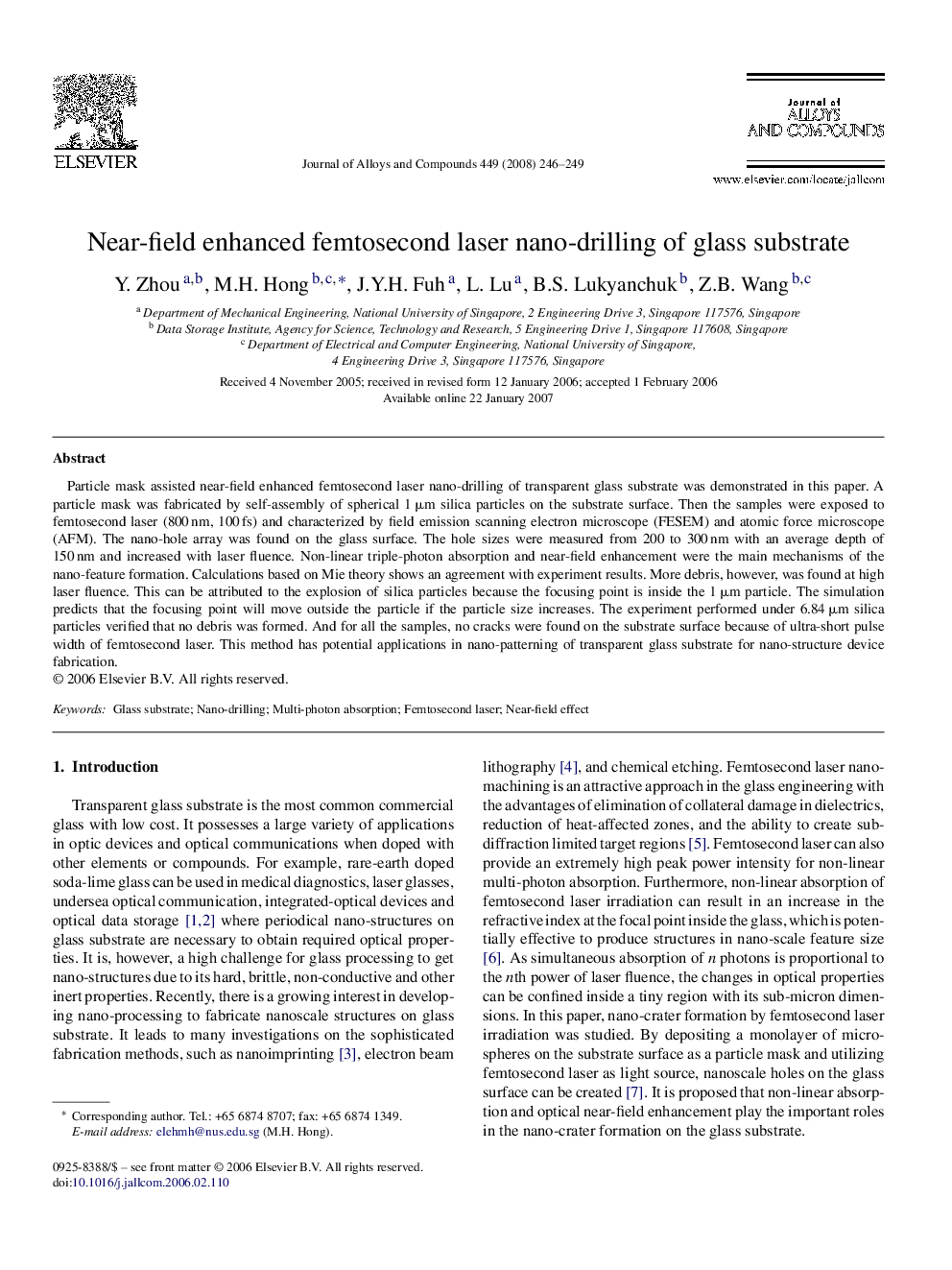| Article ID | Journal | Published Year | Pages | File Type |
|---|---|---|---|---|
| 1625475 | Journal of Alloys and Compounds | 2008 | 4 Pages |
Particle mask assisted near-field enhanced femtosecond laser nano-drilling of transparent glass substrate was demonstrated in this paper. A particle mask was fabricated by self-assembly of spherical 1 μm silica particles on the substrate surface. Then the samples were exposed to femtosecond laser (800 nm, 100 fs) and characterized by field emission scanning electron microscope (FESEM) and atomic force microscope (AFM). The nano-hole array was found on the glass surface. The hole sizes were measured from 200 to 300 nm with an average depth of 150 nm and increased with laser fluence. Non-linear triple-photon absorption and near-field enhancement were the main mechanisms of the nano-feature formation. Calculations based on Mie theory shows an agreement with experiment results. More debris, however, was found at high laser fluence. This can be attributed to the explosion of silica particles because the focusing point is inside the 1 μm particle. The simulation predicts that the focusing point will move outside the particle if the particle size increases. The experiment performed under 6.84 μm silica particles verified that no debris was formed. And for all the samples, no cracks were found on the substrate surface because of ultra-short pulse width of femtosecond laser. This method has potential applications in nano-patterning of transparent glass substrate for nano-structure device fabrication.
